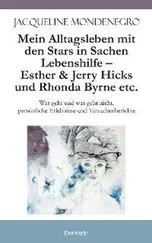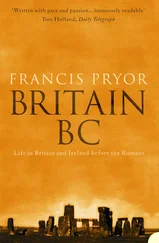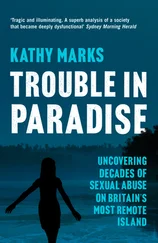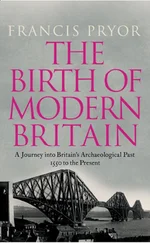To some extent they have been given the first: the focus on neighbourhood policing, the re-introduction of foot patrols and the creation of community support officers. But the second is not something that the police alone can do. Indeed, research suggests they may make very little difference.
In the 1970s, police chiefs in Kansas tested the widely held theory that having more officers on the streets would cut crime and make people feel safer. They split up the city patrol squads: some areas had two or three times as many uniformed cops on the streets; in others officers only went out onto the beat if they were responding to calls; the rest carried on as normal. The results came as something of a shock. There was no difference in the crime rates between the three areas and local people felt no less fearful whichever kind of patrol they had.
Kansas is not Dock Green. The American officers were in cars, not on foot. But the research was seen as evidence of the limits to what beat officers could actually achieve. They rarely catch criminals, they may not deter much crime and they don’t necessarily make people feel more relaxed. Indeed, the sight of uniforms can sometimes reinforce apprehension, a reminder of the threat from criminality.
In 2000, the Joseph Rowntree Housing Trust responded to the demands of their tenants for a bobby to patrol the North Yorkshire village of New Earswick. The trustees agreed to pay North Yorkshire Police £25,000 a year for a uniformed constable, who was contracted to contribute a visible presence in the streets and provide reassurance and a sense of security to the public. The scheme achieved the opposite. Both crime and the fear of crime increased, and residents’ satisfaction with the local police declined. Evaluation of the project concluded that ‘seeking solutions to problems of local order through a policing and security lens alone may serve to exacerbate residents’ fears’.
This paradox has inspired some profound questions as to what the police are actually for and how we might measure success. Robert Peel famously said that the test of police efficiency was the absence of crime and disorder. On that basis, and taking account of the evidence from both recorded police crime figures and the British Crime survey, they have generally been getting ever more efficient since 1995. But, of course, that’s not how we measure police efficiency because, if we are honest, we don’t actually believe that crime, or the absence of it, is entirely or even mainly down to the police.
Crime has fallen in pretty much every Western nation over the same period, irrespective of criminal justice or policing policies. Criminologists are still scratching their heads as to why that is but some suspect it may have something to do with the global economy or stable democracy. Perhaps it is linked to improved education systems or human rights legislation. It could be a consequence of the collapse in the price of second-hand TVs and better locks. And it may, in part at least, be down to intelligent policing — new technology and more sophisticated approaches to crime prevention and investigation.
But the idea that we can draw a line between crime levels and police efficiency is far too simplistic. When crime was rising throughout the 1960s, 70s and 80s, people didn’t say it was the police’s fault for not being cleverer. They blamed delinquent youth, or unemployment, or the collapse of traditional values. Equally during the last two decades, when crime has generally been falling, people haven’t said it is down to brilliant detective work or the efforts of patrolling constables. In truth, they haven’t even been convinced that crime is falling and still talk about social breakdown being to blame for rising lawlessness.
Tony Blair’s government originally tried to measure police performance against a whole panoply of targets: response times, arrests and convictions, how quickly they wrote to victims, clear-up rates, time spent on the beat rather than filling forms. Then, persuaded by the argument that actually all these targets were getting in the way, and certainly not translating into people feeling safer, they scrapped that idea and went for the one simple measure of public confidence. It was a recognition that while people may say that they want police to reduce crime, what they really want is for them to reduce fear. Bobbies on the beat were never really there to catch crooks but to be a presence: to worry potential villains and calm the law-abiding citizenry.
Shortly after taking office in 2010, the Conservative Home Secretary Theresa May announced that, in her view, the mission of the police was ‘to cut crime: no more and no less’. But within three months she was saying she wanted more bobbies on the beat to tackle antisocial behaviour rather than simply criminal activity. Like almost every occupant of her post before, Mrs May appeared to be evoking the ghost of old Dixon, who knew how to deal with nuisance and mischief. ‘Let’s get them out from behind desks filling forms and out on the street where people want them and they want to be.’
There is a longing for a return to some mythical bygone age where cheerful constables kept neighbourhoods safe and secure. But what we really want is a return to a time when neighbourhoods kept neighbourhoods safe and secure, a time when locals would regularly stroll their own streets and offer a cheery ‘Good evenin’’ to all.
The ancient village of Crudgington in Shropshire has a name and a history that ring true. But don’t be fooled, all is not always what it seems. The Old English and Celtic roots of the settlement’s original name, Crugelton, translate as the hill-hill hamlet: it is as though the locals were determined to stress their neighbourhood’s aerial aspect with a double emphasis of its hilliness. Crudgington, however, is not on a hill. The village can trace its history back to 1231; it is listed in the Domesday Book. In the search for the authentic English village, you cannot find a more reliable provenance than that. But if you sniff the air in Crudgington you might still detect the faint whiff of falsehood. This is where they dreamed up Lymeswold cheese.
In telling the story of Britain’s glorious cheese industry, one encounters contradictions that still shape the national conversation: heritage versus modernity; local versus global; authenticity versus artifice. It is a journey through many ancient battlegrounds but, you may be glad to know, it has a happy ending.
Once upon a time, thousands of farmwives across Britain took paddle and churn to the fresh milk that was not consumed by the local villagers. On thousands of kitchen tables, thousands of cheeses were prepared. This was the method of preserving the protein goodness of the cowshed so the ploughman might have his lunch. But then, as the second half of the nineteeth century steamed and clanged into view, all that changed.
The arrival of the railways transformed rural life, the engine of empire dragging the local village to the global market. Crudgington was among the hundreds of places that got its own station. Instead of farmers selling fresh milk only to the community around the herd or flock, crates could be despatched far beyond, even into the hearts of rapidly expanding cities. A network of milk trains and doorstep deliverymen brought farm-fresh milk to every corner of the nation. And we lapped it up.
Farmers could scarcely cope with demand from a growing population. The need to preserve the leftovers all but disappeared. Instead, new industrial technology allowed producers to centralise cheese-making, mopping up any excess milk from across their region. To brand their product, cheeses increasingly took on the name of the area from which they hailed. But more than that, the search for consistent quality meant recipe, shape and size were controlled. From this process emerged the reputations of some of the truly great cheeses of Britain, but it also rang the death knell for small, local cheese-makers. Hundreds of varieties were lost forever; individuality did not fit with the times.
Читать дальше












